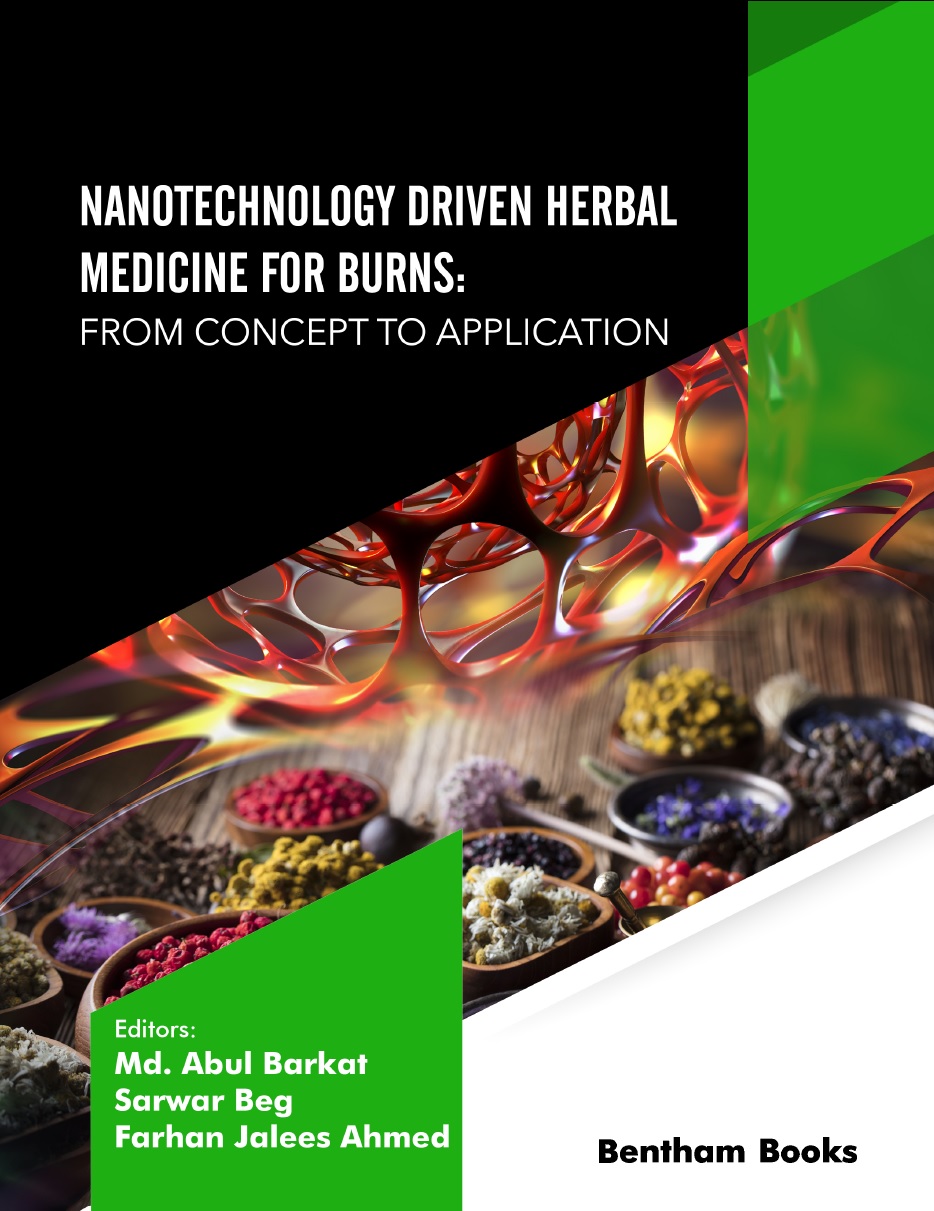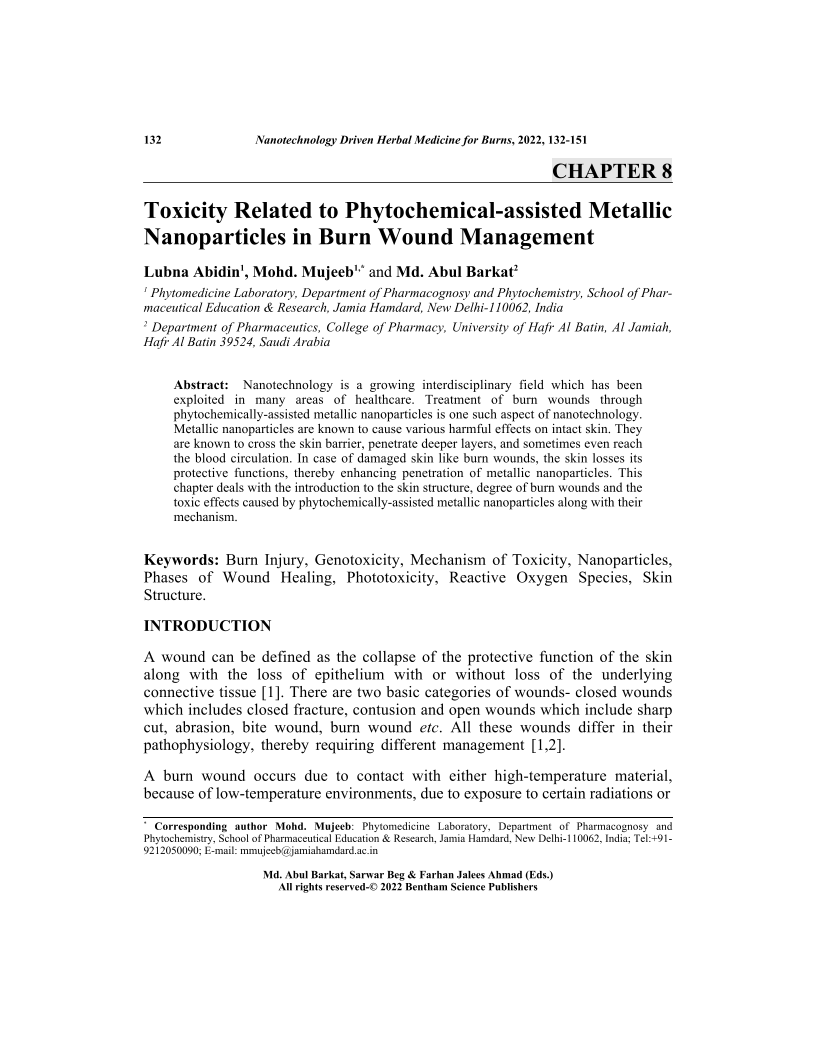Toxicity Related to Phytochemical-assisted Metallic Nanoparticles in Burn Wound Management

- Authors: Lubna Abidin1, Mohd. Mujeeb2, Md. Abul Barkat3
-
View Affiliations Hide AffiliationsAffiliations: 1 Phytomedicine Laboratory, Department of Pharmacognosy and Phytochemistry, School of PharmaceuticalEducation & Research, Jamia Hamdard, New Delhi 110062, India 2 Phytomedicine Laboratory, Department of Pharmacognosy and Phytochemistry, School of PharmaceuticalEducation & Research, Jamia Hamdard, New Delhi-110062, India 3 Department of Pharmaceutics, College of Pharmacy, University of Hafr Al Batin, Al Jamiah, Hafr Al Batin 39524, Saudi Arabia
- Source: Nanotechnology Driven Herbal Medicine for Burns: From Concept to Application , pp 132-151
- Publication Date: December 2021
- Language: English
Toxicity Related to Phytochemical-assisted Metallic Nanoparticles in Burn Wound Management, Page 1 of 1
< Previous page | Next page > /docserver/preview/fulltext/9789815039597/chapter-8-1.gif
<div>Nanotechnology is a growing interdisciplinary field which has been</div><div>exploited in many areas of healthcare. Treatment of burn wounds through</div><div>phytochemically-assisted metallic nanoparticles is one such aspect of nanotechnology.</div><div>Metallic nanoparticles are known to cause various harmful effects on intact skin. They</div><div>are known to cross the skin barrier, penetrate deeper layers, and sometimes even reach</div><div>the blood circulation. In case of damaged skin like burn wounds, the skin losses its</div><div>protective functions, thereby enhancing penetration of metallic nanoparticles. This</div><div>chapter deals with the introduction to the skin structure, degree of burn wounds and the</div><div>toxic effects caused by phytochemically-assisted metallic nanoparticles along with their</div><div>mechanism.</div>
-
From This Site
/content/books/9789815039597.chapter-8dcterms_subject,pub_keyword-contentType:Journal105

